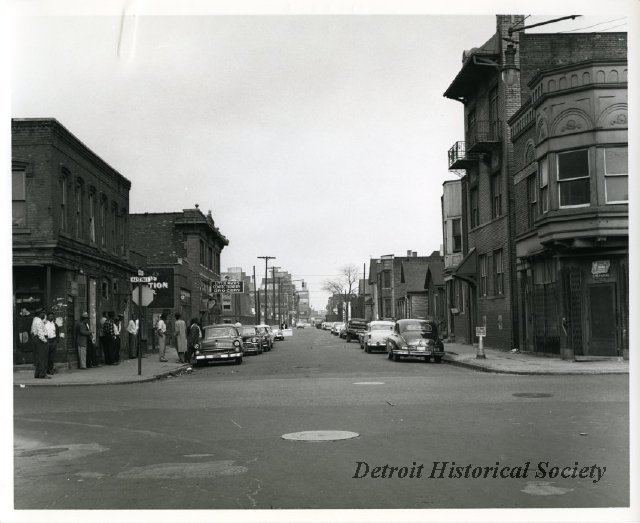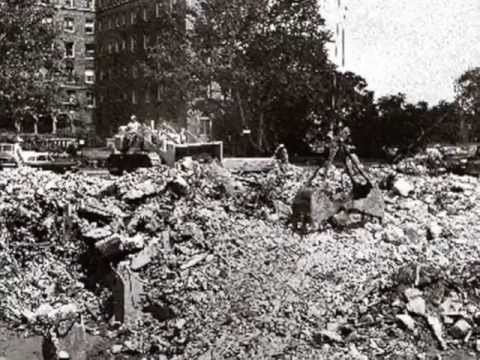 | ||
Black Bottom was a predominantly black neighborhood in Detroit, Michigan. The name of the neighborhood is often erroneously believed to be a reference to black people, but was given to the area by the original French settlers for its dark topsoil. The Black Bottom–Paradise Valley became known for its significant contribution to American music including Blues, Big Band, and Jazz from the 1930s to the 1950s. Located on Detroit's near east side, both Black Bottom and Paradise Valley were bounded by Brush Street to the west, and the Grand Trunk railroad tracks to the east. Bisected by Gratiot Avenue, stretching south to the Detroit River was Black Bottom and stretching north to Grand Boulevard was Paradise Valley. Black Bottom and Paradise Valley were eventually cleared and replaced by various urban renewal projects, and had ceased to exist by the 1960s.
Contents

History

The area's main commercial avenues were Hastings and St. Antoine streets. An adjacent north-bordering area known as Paradise Valley contained night clubs where famous Blues, Big Band, and Jazz artists such as Billie Holiday, Sam Cooke, Ella Fitzgerald, Duke Ellington, Billy Eckstine, Pearl Bailey, and Count Basie regularly performed. In 1941, the city's Orchestra Hall was named Paradise Theatre. Aretha Franklin's father, the late Reverend C. L. Franklin, first opened his New Bethel Baptist Church on Hastings Street. Hastings Street, which ran north-south through Black Bottom, had been an area populated by immigrants before World War I.

With ethnic succession, by the 1940s it had become an African-American community of black-owned business, social institutions, and night clubs. Historically, this area was the source of the River Savoyard, which was buried as a sewer in 1827. Its rich soils are the source of the name "Black Bottom". Detroit's Broadway Avenue Historic District contains a sub-district sometimes called the Harmonie Park District which has taken on the renowned legacy of Detroit's music from the 1930s through the 1950s and into the present.

Black Bottom endured the Great Depression, with many of its residents working in factories. Following World War II, the physical structures of Black Bottom were in need of replacement. In the early 1960s, the City of Detroit demolished the Black Bottom district as part of an urban renewal project. The area was replaced by the Chrysler Freeway (Interstate 75 and Interstate 375) and Lafayette Park, a residential development designed by Mies van der Rohe and intended as a model neighborhood. It combined residential townhouses, apartments and high-rises with commercial areas. Many of the residents relocated to large public housing projects such as the Brewster-Douglass Housing Projects Homes and Jeffries Homes.
Geography
Historically, its primary business district was in an area bounded by Vernor, John R., Madison, and Hastings. Gratiot Avenue passed through that business district. The business district included hotels, restaurants, music stores, bowling alleys, shops, policy offices, and grocery stores. There were 17 nightclubs in that business district.
